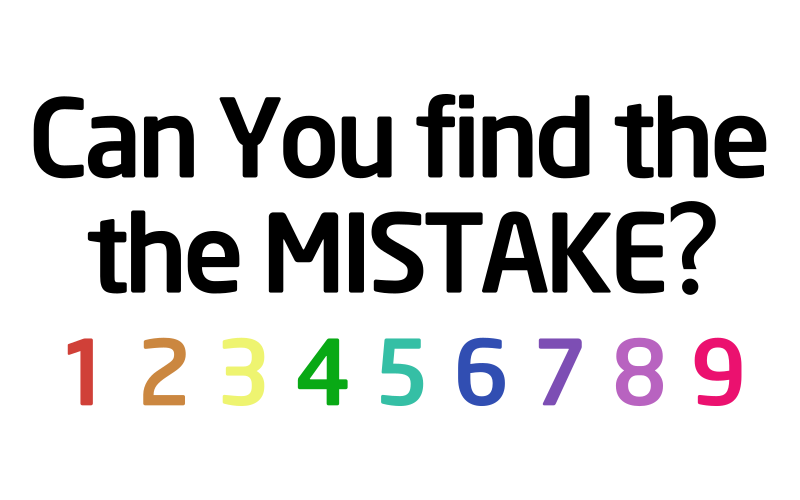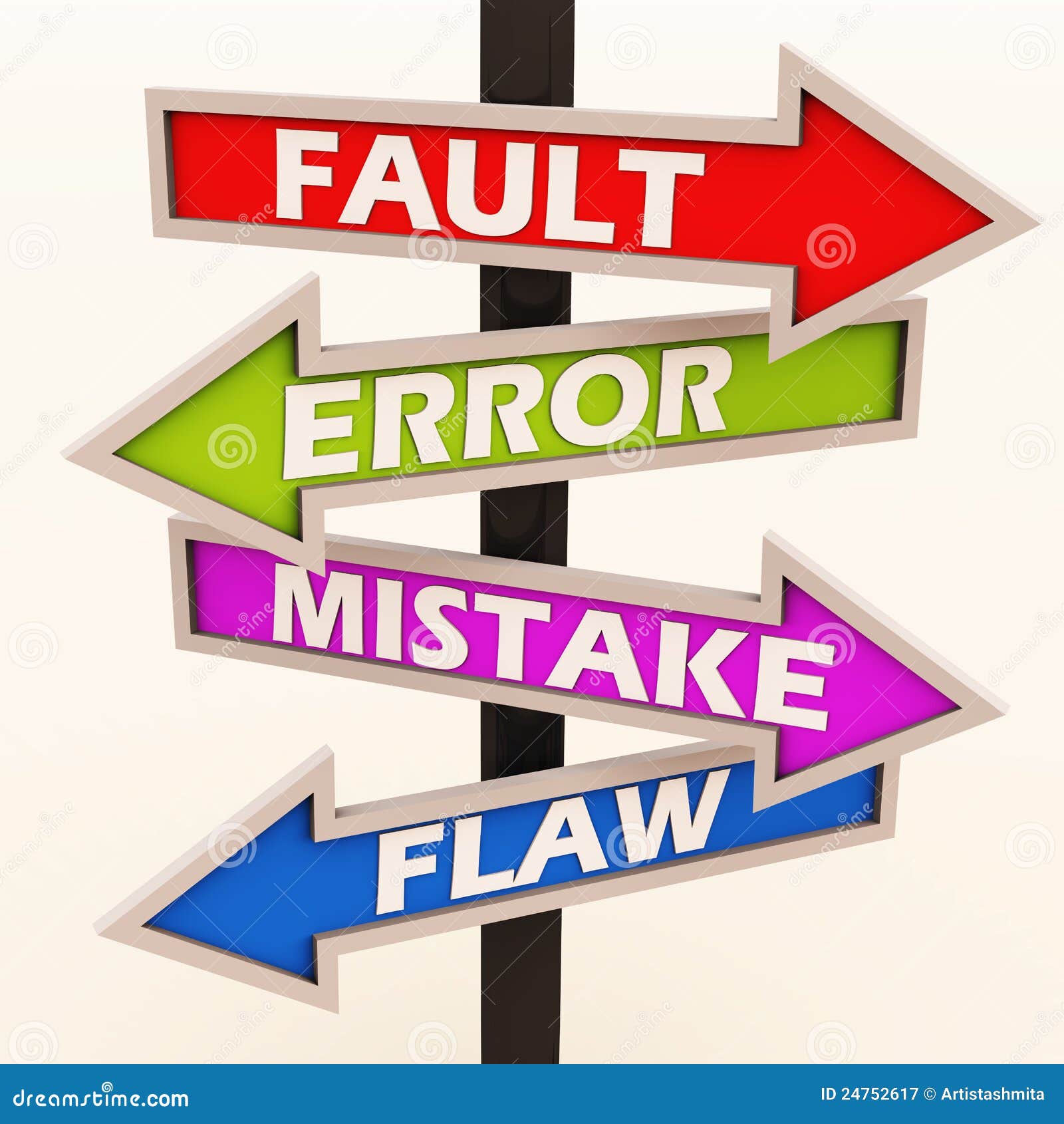So, you're here because you want to learn how to find the mistake, right? Whether you're a student, a professional writer, or someone who just wants to improve their skills, this guide is your ultimate companion. Mistakes happen to everyone, but knowing how to spot them can make all the difference. From grammar errors to logical inconsistencies, we'll dive deep into the world of mistakes and help you become a master at catching them.
Let's face it, we've all been there. You finish an important document, hit send, and then BAM—you notice a typo or a glaring error that makes you want to crawl back under the covers. But don't worry, my friend, it's not the end of the world. In fact, learning how to find the mistake is a skill that can save you from embarrassment and boost your credibility in the long run.
This article is designed to be your go-to resource for everything related to spotting errors. We'll cover the basics, advanced techniques, and even some fun tips to make the process enjoyable. So grab a cup of coffee, get comfy, and let's embark on this journey together!
Read also:Big Titty Tiktok The Cultural Phenomenon Taking Over The Internet
Why Is It Important to Learn How to Find the Mistake?
First things first, why does finding mistakes matter so much? Well, think about it this way: mistakes can cost you time, money, and even your reputation. Whether you're writing an email to a client, preparing a presentation, or drafting a report, accuracy is key. By learning how to find the mistake, you're not just improving your work—you're also showing others that you value precision and professionalism.
Common Mistakes People Make and How to Avoid Them
Now, let's talk about some of the most common mistakes people make in writing. These little errors might seem harmless, but they can add up and create a negative impression. Here's a quick rundown:
- Spelling errors: These are the easiest to spot, but they're also the easiest to miss if you're not paying attention.
- Grammar mistakes: From subject-verb agreement to misplaced modifiers, grammar errors can confuse your readers.
- Punctuation problems: A missing comma or an extra period might seem like no big deal, but they can change the entire meaning of a sentence.
- Inconsistencies: Using different styles or formats within the same document can make your work look unprofessional.
By being aware of these common pitfalls, you can take the first step toward becoming a better writer. Trust me, it's not as hard as it sounds!
How to Train Your Eyes to Find the Mistake
Spotting errors isn't something you're born with—it's a skill that can be developed over time. Here are some practical tips to help you train your eyes and catch those pesky mistakes:
Read Aloud
One of the best ways to find the mistake is by reading your work aloud. This forces you to slow down and pay attention to every word. You'd be surprised at how many errors you catch when you hear them instead of just seeing them on the screen.
Take a Break
Ever noticed how mistakes become more obvious after stepping away from your work for a while? That's because taking a break gives your brain a chance to reset. When you come back with fresh eyes, you're more likely to spot errors that you missed before.
Read also:Peterbot Skins The Ultimate Guide To Elevating Your Roblox Experience
Use Tools Wisely
While tools like Grammarly or Hemingway can be helpful, they're not foolproof. Always remember that these tools are there to assist you, not replace your critical thinking. Use them as a starting point, but trust your instincts when it comes to final edits.
Find the Mistake in Different Types of Writing
Not all writing is created equal, and neither are the mistakes. Let's take a look at how to find the mistake in different types of content:
Academic Writing
In academic writing, precision is everything. You need to pay close attention to formatting, citation styles, and technical terms. Here are a few things to watch out for:
- Check your references and make sure they're formatted correctly.
- Look for repetitive phrases or sentences that could weaken your argument.
- Ensure that your tone remains formal and objective throughout the document.
Professional Writing
When it comes to professional writing, clarity and professionalism are key. Whether you're drafting an email or creating a business proposal, here's what you should focus on:
- Avoid jargon unless you're sure your audience will understand it.
- Double-check names, titles, and other important details to avoid offending anyone.
- Proofread for tone and make sure your message comes across as respectful and confident.
Creative Writing
Creative writing gives you more freedom, but that doesn't mean you can ignore mistakes. Here's how to find the mistake in creative content:
- Look for inconsistencies in character voices or plotlines.
- Pay attention to pacing and make sure your story flows smoothly.
- Check for overused words or phrases that might detract from the impact of your writing.
Advanced Techniques for Finding Mistakes
Once you've mastered the basics, it's time to level up your game. Here are some advanced techniques to help you find the mistake like a pro:
Backward Reading
This might sound strange, but reading your text backward can help you focus on individual words instead of getting caught up in the overall flow. It's a great way to catch spelling errors and awkward phrasing.
Peer Review
Sometimes, a fresh pair of eyes can spot mistakes that you've missed. Don't be afraid to ask a friend or colleague to review your work. They might catch things you wouldn't have noticed on your own.
Check for Logical Flow
Even if your writing is grammatically correct, it might still have logical inconsistencies. Make sure your arguments are clear, your transitions are smooth, and your ideas are well-organized.
Real-Life Examples of Mistakes and Their Consequences
To drive home the importance of finding mistakes, let's take a look at some real-life examples where errors led to serious consequences:
The Mars Climate Orbiter Incident
In 1999, NASA lost a $125 million spacecraft because of a simple unit conversion error. One team used imperial units while the other used metric units, leading to a catastrophic failure. This is a stark reminder of how even small mistakes can have huge consequences.
Medical Errors
In the medical field, mistakes can literally mean life or death. From misdiagnoses to medication errors, the stakes are incredibly high. This is why healthcare professionals are trained to double-check everything and never assume anything.
Financial Mistakes
In the world of finance, a misplaced decimal point or a wrong calculation can cost companies millions of dollars. Attention to detail is crucial, especially when dealing with large sums of money.
How Technology Can Help You Find the Mistake
While technology isn't a replacement for human expertise, it can certainly enhance your ability to find the mistake. Here are a few tools and resources to consider:
Grammar and Spell-Checking Tools
Tools like Grammarly, Ginger, and Hemingway can help you catch basic errors and improve your writing style. Just remember that they're not perfect and should be used as a supplement, not a substitute for human proofreading.
Text-to-Speech Software
Text-to-speech software can read your text aloud, allowing you to hear any awkward phrasing or errors that might have slipped through. It's a great way to catch mistakes that you might not notice when reading silently.
Collaboration Platforms
Platforms like Google Docs and Microsoft Teams allow you to collaborate with others in real-time. This can be especially helpful if you're working on a team project and need multiple sets of eyes to review your work.
Final Thoughts: How to Master the Art of Finding Mistakes
Learning how to find the mistake is a journey, not a destination. It requires patience, practice, and a willingness to learn from your errors. By following the tips and techniques outlined in this article, you'll be well on your way to becoming a master at spotting mistakes.
So, what's next? Take action! Start applying these strategies to your own writing and see how much of a difference they make. And don't forget to share this article with your friends and colleagues who might benefit from it. Together, we can create a world where mistakes are fewer and quality is king!
Table of Contents
- Find the Mistake: A Comprehensive Guide to Spotting Errors in Writing and Beyond
- Why Is It Important to Learn How to Find the Mistake?
- Common Mistakes People Make and How to Avoid Them
- How to Train Your Eyes to Find the Mistake
- Find the Mistake in Different Types of Writing
- Advanced Techniques for Finding Mistakes
- Real-Life Examples of Mistakes and Their Consequences
- How Technology Can Help You Find the Mistake
- Final Thoughts: How to Master the Art of Finding Mistakes


